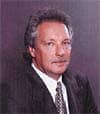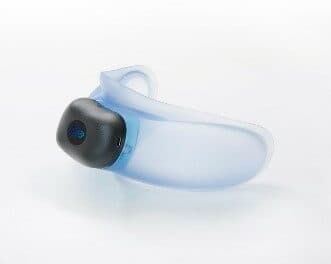A successfully treated sleep apnea patient becomes involved in the American Sleep Apnea Association, which is dedicated to promoting voluntary mutual support groups, research, and continuous improvement of care.

I have gone from a typical sleepy middle-aged male who did not even know how to spell sleep “apnia,” into a well-educated patient and sleep activist with national recognition.
The A.W.A.K.E. Network
Four months after I was diagnosed with sleep apnea, I received an invitation to attend the initial meeting of a sleep apnea support group called A.W.A.K.E. I had never been drawn to a support group before, but sleep apnea was new to me, and I did not really know anyone else with the same problem, so I decided to give it a try.
After a couple of meetings, I volunteered to help with mailings and program planning. When the two women leading the group changed jobs, I was left in charge—temporarily, so I thought—and 8 years later, I am still coordinating the group.
The A.W.A.K.E. Network offers help to sleep apnea patients through the work of dedicated volunteers and committed sleep professionals who help sponsor the groups. Our goals include providing mutual support and encouragement to patients; offering continuing education to our members with programs on equipment care, treatment options, and associated health issues; equipment fairs where patients can see all types of CPAP equipment; and encouraging patients who have become knowledgeable about sleep apnea to reach out to others and help spread the word that sleep apnea can be a serious disorder that can be easily diagnosed and treated.
I have attended about 150 A.W.A.K.E. meetings over the years, and in every meeting there are people who learn something new, which helps them become more compliant patients. At the same time, the opportunity to help people who are struggling to understand their disorder and to comply with their chosen therapy offers a great deal of satisfaction to the sleep professionals involved with the A.W.A.K.E. groups. Patients who attend the meetings appreciate the support of the sponsors, which are usually sleep centers and/or home care companies.
At one A.W.A.K.E. meeting, I met Frankie Roman, MD, medical director, Doctors’ Hospital Center for Sleep Disorders, Massillon, Ohio, whose talk about the “Wake Up America” campaign enlightened me to the prevalence of sleep apnea and the alarming lack of public awareness. That meeting encouraged me to become a sleep activist. I volunteered some of my time and was the sleep apnea patient speaker at the Great American SleepWalk in 1996. Since that rally, I have done other public talks about sleep apnea. I also answer questions at my own Web site and on the AOL sleep disorders message boards, promote the A.W.A.K.E. Network, and offer sleep apnea materials at local health fairs. I have done various media interviews and have educated my primary physician and cardiologist to look for apnea in other patients.

The ASAA was formed as a nonprofit organization in 1990 by a group of people with apnea and concerned health care providers and researchers. Our mission statement is simple and clear: “The ASAA is dedicated to reducing injury, disability, and death from sleep apnea and to enhancing the well-being of those affected by this common disorder. The ASAA promotes education and awareness, the ASAA A.W.A.K.E. Network of voluntary mutual support groups, research, and continuous improvement of care.” Our focus is to reach the millions of undiagnosed patients with sleep apnea by assisting them to comply with treatment and to live with sleep apnea, and also to serve as an advocate for people with this common disorder.
The ASAA works in several important areas. Providing information to the public is a major effort. We answer thousands of requests for information each year and publish a number of short, informational articles on sleep apnea such as “Being Evaluated for Sleep Apnea.” Our Web site (www.sleepapnea.org) offers many of our publications online, which helps answer many of the questions asked by persons with sleep apnea or those who suspect they have sleep apnea. The Web site also gives CPAP users the information they need about flying with their machines, which, as medical equipment, does not count toward the carry-on limit. We work with other nonprofit organizations for health care professionals to reach the undiagnosed. We answer questions from the media and educate them on sleep apnea and act as an advocate for sleep apnea patients by participating in various forums and working with the National Center for Sleep Disorders Research.
The A.W.A.K.E. Network of support groups plays an important role in our educational and advocacy efforts. The A.W.A.K.E. groups are a terrific source of information for the attendees and they offer real-world feedback to the sponsoring organizations. The programs offered by these locally run groups increase the awareness of sleep apnea in the population as educated patients spread the word about diagnosis and treatment.
The ASAA also works to educate the medical profession about sleep apnea. Each year, we exhibit at scientific meetings, such as the American Academy of Family Physicians and the American Society of Anesthesiologists to help health care professionals outside the sleep field recognize sleep-disordered breathing in their patients. We offer our own publications for professional education (“If Your Patient Is Not Complying with CPAP”), reprints of pertinent research articles, and other materials. We provide originals of education bulletins for local reproduction and distribution to patients. We also have a professional information section on our Web site. While we are pleased with all that we have accomplished in recent years, there is still more that we want to do.
To conduct our programs and activities, we rely on support from members’ dues; individual, foundation, and corporate donations; and annual contributions from members of the ASAA Industry Roundtable. Roundtable members are sleep industry companies committed to supporting the ASAA at varying levels of financial support. A current listing of Roundtable members is available on the Web at www.sleepapnea.org/corporate.html.
Lend A Helping Hand
The ASAA continues to work on awareness and patient education issues. That is our mission—one we share with many others in the sleep field. You can help the ASAA accomplish this mission as well, in the following three areas:
Awareness and Patient Education—An educated patient is more likely to be a compliant patient. By purchasing a copy of our “What Is Sleep Apnea?” video, you can educate patients in your office or sleep center. You can make copies of our education bulletins like “Treatment Options for Adults with Obstructive Sleep Apnea” at no charge and distribute them to patients. Reprints of popular newsletter articles such as “Understanding a Sleep Study,” can be ordered from the ASAA. You can also buy copies of the “Get the Facts About Sleep Apnea” brochure and distribute them; the explanation of apnea can save you and your staff time spent in answering patient questions. You can distribute copies at other locations, such as primary care physicians’ offices or libraries, to help increase your community’s awareness. Check the links at www.sleepapnea.org/promemb.html for more information on ordering these materials.
A.W.A.K.E. Network—Currently, there are just under 200 A.W.A.K.E. groups scattered around the country, but there are many areas where no group exists. If you are not currently offering a support group for your apnea patients, consider doing so. You can work with a cooperating sleep center or home care dealer in your area. A $30 fee that covers the cost of the A.W.A.K.E. Guidelines will get you started. The groups are locally run and we suggest you look for patients to volunteer as leaders. You also gain valuable feedback from the patients on what issues are important to them and what problems they are having with their therapies. Information about starting a group is available at www.sleepapnea.org/ awake.html.
Funding—All nonprofit organizations can use additional funding. I suggest that each sleep doctor, sleep center, and home care company join the ASAA as professional members. An annual, tax-deductible donation of $100 or more will help further the ASAA mission and you will receive a certificate recognizing your support. Hanging that certificate in a location visible to your patients enhances the image of your office as a caring organization. A donation form can be found on the Web at www.sleepapnea.org/ membform.html.
If your company is involved in the sleep field but not yet a member of the ASAA Industry Roundtable, please consider joining. Contact Christin Engelhardt at the ASAA office in Washington, DC at (202) 293-3650 for more information.
A Final Thought
As a sleep apnea patient, I have benefited greatly from the work of the ASAA. As a board member, I recognize the support that many of you have given to the ASAA and the A.W.A.K.E. Network. I encourage you to take advantage of the ASAA materials and programs and urge you to continue to support the ASAA now and in the future. We can work together to increase awareness and educate patients. After all, the ASAA and sleep professionals share the mission of seeing that all patients are diagnosed and treated properly.
Dave Hargett is a diagnosed and effectively treated sleep apnea patient who has become a sleep activist; he is a member of the Board of Directors of the American Sleep Apnea Association.


